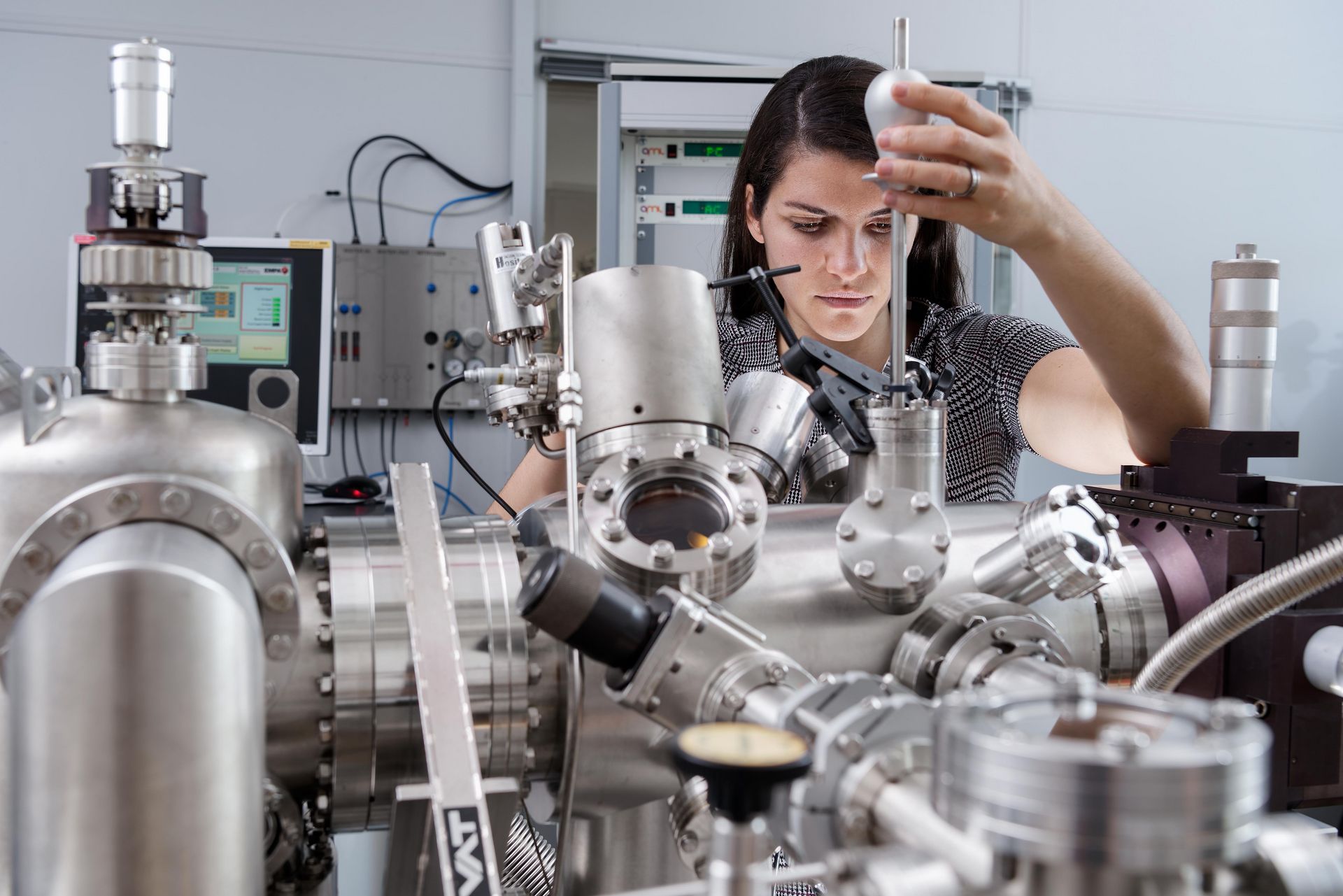News

Tweaking at the nanoscale
The CarboQuant project at Empa has been financed by the Werner Siemens Foundation since 2022. Just one year into their work, the researchers have already achieved an important milestone.
The CarboQuant researchers must first design their specific, graphene-based molecular structures on the drawing board and then fabricate them with atomic precision. The greatest difficulty in the process is that the resulting materials are practically insoluble and, in some cases, highly reactive—a “nightmare for any chemist”, as CarboQuant co-project leader Oliver Gröning says. To solve the problem, the researchers began ynthesising the materials on a metallic surface rather than in a liquid. Over the past fifteen years, the method has advanced so far that it’s now possible to manufacture a wide range of completely novel graphene structures—nanoribbons, for example.
Embedding spin
Indeed, so much progress has been made that the CarboQuant team are now able to control the production of even complex graphene nanoribbons. And the researchers have managed to incorporate and link so-called spins in the nanostructures. A fundamental property of elementary particles, spins are quantised magnetic moments. “In quantum physics, they’re looked on as a highly promising building block in new quantum technologies,” Gröning says.
Now the team are turning to the next step: developing a technology platform that makes the unusual quantum properties of their graphene nanoribbons available. Before this happens, however, the researchers must first characterise and analyse the quantum effects, and then integrate them into electronic components. As Oliver Gröning explains, “These are all extremely broad research fields that we need to approach from an interdisciplinary perspective.”

Integration the main challenge
In 2022, the Materials to Devices research group received a major boost thanks to the appointment of Gabriela Borin Barin to lead this activity. Borin Barin and her team have taken on the challenge of integrating the graphene nanoribbons into microchip-like structures and measuring the electronic transport properties under different conditions. “The work is highly demanding, as our nanostructures are much smaller than the components in even the most recent commercial chip generation,” says Roman Fasel, co-project leader of CarboQuant. “In order to build these kinds of minuscule chip components, we first need to conduct
more basic research and acquire specific know-how from a wide range of disciplines.” In this regard, Fasel sees himself as a networker: his goal is to unite research groups from across the globe in the CarboQuant project.
Collaboration a recipe for success
Recent successes have proven Fasel right: in 2022, a consortium of research groups from the US, Germany, China and Switzerland published an article on the integration of graphene nanoribbons—measuring just 0.6 nanometres—in field-effect transistors and on their electronic transport properties. “But it was also the expertise within our own ranks that led to another breakthrough,” Fasel says with evident satisfaction. In collaboration with the Transport at Nanoscale Interfaces Laboratory at Empa, the CarboQuant team manufactured components of complex electronic graphene nanoribbons, which integrate several control electrodes in an extremely minute space. Another achievement was establishing an electronic contact between individual graphene nanoribbons and electrodes made of single-wall carbon nanotubes—the cylindrical variant of graphene nanoribbons. “The incredibly tiny proportions made this challenge seemingly insurmountable,” as Roman Fasel explains. “But thanks to the in-house collaboration at Empa, we’ve now brought manufacturing precision down to a scale that has never been seen before.”
In the latest measurements, the components demonstrated very clear characteristics of a single-electron transistor, meaning they have the hallmarks of a quantum effect. “With this work, we’ve already achieved an important milestone that we can build on for the integration of more complex electronic and spin functionalities,” Fasel says.
Manipulating and understanding spin
Although the researchers currently have the capability of making atomic-resolution characterisations of their graphene nanomaterials’ spin properties, the goals of manipulating spins and understanding their dynamics are impossible to reach with the existing infrastructure at Empa. Now, however, thanks to financing from the Empa directorate and the Swiss National Science Foundation, a new scanning tunnelling microscope will be set up, making it possible to perform electron spin resonance on single atoms. To operate the microscopy unit, CarboQuant is creating a new research group for molecular quantum magnetism.